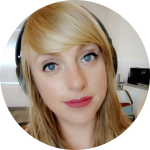
For the 2014 theme, the Burning Man Organization chose Caravansary, whose definition is an inn with a central courtyard for travelers in the desert regions of Asia or North Africa, or a group of people traveling together; a caravan. With a shift in the CORE (Circle of Regional Effigies) to the Souk, where more intimate interactions are to take place, the community was left wondering what happened to CORE and not having a clue what a souk is. The definition of a souk is, an Arab market or marketplace; a bazaar. This page does an amazing job describing the concept in an ad nauseum manner. But most people in the Sacramento community had not read that page nor watch the video by Larry Harvey, Burning Mans founder. Taking the concept idea of the Playa Travelers Association and better refining it while creating marketing materials was obviously the first step.
Planning for a community meeting that was taking place 4 days later, myself and a regional coordinator who was mentoring me hammered out the details from the concept, making them more solid and easy to sell to the community. The Playa Travel Association is an impromptu performance art piece that serves to simulate the typical interactions that occur between sales representatives and patrons while facilitating the exchange of membership-based roadside assistance services. At this second meeting, these trifolds were distributed to the crowd to help educate and raise awareness of what this years theme and regional project were and what they consisted of. Getting to round up the last few people who wanted to have a hand in building this Souk project was a blessing. Having the opportunity to talk with the community about what issues they had with prior years projects was crucial in the way that I lead this project. This feedback was consistent and while some of it was personal, it was all easy to mitigate.
The project was divided into two teams, build crew and volunteer crew. Where the volunteer crew only needed to worry about showing up on Playa and volunteering for a few hours, the build team had the arduous task of facilitating the 11’ x 23’ space in one of the stalls of the Souk which surrounded the man on the Playa in two weeks time. The build team consisted of those who were known to be able to deliver. With a decrease in the average age of the build crew compared to the past two CORE projects, this project had a much different feel in that it afforded those in the community wishing to participate a greater sense of ownership in part because of the age-shift, but mostly due to the flexibility afforded by the time crunch.
This project had a number of management hurdles that were handled by our regional coordinator with ease, what was not easy was the response of the community. I quickly enacted a “no detracting” rule; if someone didn’t like something then they needed to have a better implementation of whatever they didn’t like. This made it easy to determine if the nitpicking was justified or not, as most of the complaints were not of the variety that could be solved without the issuing party first drastically modifying their attitude. These two categorical issues were how commercial the sales aspect of this project were and the other was that this was not a true community project. The commercial aspect of this project were obvious in the sense that this is a spoof on AAA-services, which since we were not actually selling anything other than the experience I feel like this is more a matter of a persons personal tastes. The issue of this not being a community project is a strawman fallacy, the concept for this project was completed in a vacuum due to the lack of understanding by the community and the requirement of the deadline. Since nobody in the community really understood what the Souk was, it was fully impossible to solicit the community for ideas. This may seem closed minded, but the quote, “the devil is in the details” is the best way to describe how having more community engagement leads to the segmentation of an idea until that idea is dead. In the case of this project, the community was allowed to fully take the concept idea and run with it in whatever direction that they could deliver on. While our regional coordinator did her job by keeping the concept idea solidified around providing AAA-like services to travelers, the build crew had full creative control in creating a space that could facilitate such interactions.
In the end, the interactions that we had not planned on were the most popular. With the intention/random/wish tree being the most popular by far! Out of the droves of notes, I kept the ones that were the most heart felt; the rest went to the temple to be burned. We distributed 1500 stickers, 1000 membership cards, and 50 PTA laser-cut necklaces (fingers crossed none of it ended up as MOOP).
Overall the project was a success in terms of providing deep and rich interactions within the Souk. The most touching was as two patrons were interacting with our Real-time Membership Map, two women that were from the Ukraine but living in the same area struck up an altruistic conversation. The only thing I could have asked for was more time and a real budget, as those were the two primary constraints.